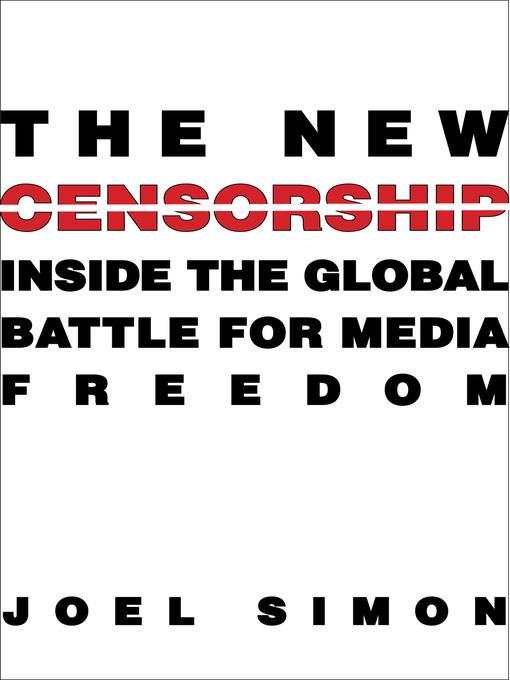
The New Censorship
Inside the Global Battle for Media Freedom
کتاب های مرتبط
- اطلاعات
- نقد و بررسی
- دیدگاه کاربران
نقد و بررسی

October 15, 2014
As the executive director of the Committee to Protect Journalists, Columbia Journalism Review and Slate contributor Simon (Endangered Mexico: An Environment on the Edge, 1997) has a worthy agenda, which he advances here in a manner devoid of both sensationalism and much literary flair.Mainly, the author lets the facts speak for themselves, using the murder of Wall Street Journal South Asia bureau chief Daniel Pearl as a springboard for an examination of how "Pakistan not only was one of the most deadly countries in the world for the media but also had one of the world's worst records for bringing the murderers of journalists to justice." Effective journalism requires presence close to the action, and thus closer to danger, and as news organizations have reduced their international staffing, the void has been filled by bloggers, freelancers and activists, lacking whatever resources and protection that institutional backing might have afforded them. The Internet might make it easier for such journalists to get the word out, but cybertechnology also makes them easier to track and monitor and for terrorists to respond with "institutionalized and now ritualized kidnapping, featuring hostage videos to exert political influence and secure ransom." Though much of the book explores repression in totalitarian regimes, the United States and its supposedly free press doesn't escape criticism: "For freedom of expression advocates, the U.S. efforts to use the Internet to spy on the world while simultaneously promoting freedom of expression online are contradictory." As an extended policy paper, the book expands the traditional definition of "journalist" and suggests that awareness of the problem might be the first step toward reducing such censorship, which has often taken such ruthless forms. Not so much a powerful reading experience as an attempt to influence international policy.
COPYRIGHT(2014) Kirkus Reviews, ALL RIGHTS RESERVED.

Starred review from September 15, 2014
Simon, a freelance correspondent in Mexico during the 1990s and currently the executive director of the Committee to Protect Journalists, brings a wealth of on-the-ground reporting expertise and experience with defending journalists to this wide-ranging and shattering assessment of threats to contemporary journalism. Simon takes the position that journalists (including citizen journalists) have been a huge part of setting the humanitarian agenda of shining the light on atrocities and abuses that would remain unseen if the photo weren't taken or the report not filed. This uncovering has always been a dangerous business. However, a perfect storm of economic strain on newspapers, resulting in hurried, big-story-only visits by foreign correspondents; the widespread killings and kidnappings of journalists who do venture abroad or within their own country; and governmental manipulation and control of the media, especially through technology, has made current foreign reporting an increasingly lethal profession. The result is that the public is kept ignorant of the depths of human-rights abuses and conflicts. This book is far more wide ranging than its title indicates. Simon writes about the effects of social media on the production and consumption of news, the ways that corporate and partisan control of the media impoverishes us all, and how governments prevent their own people and a worldwide audience from knowing what's really going on. Most moving are Simon's wrenching stories of the ordeals journalists have suffered, from kidnappings through imprisonment through death. Simon's assessment of what it means to be a journalist and his call to action at book's end are moving and practical. A must-read.(Reprinted with permission of Booklist, copyright 2014, American Library Association.)

























دیدگاه کاربران